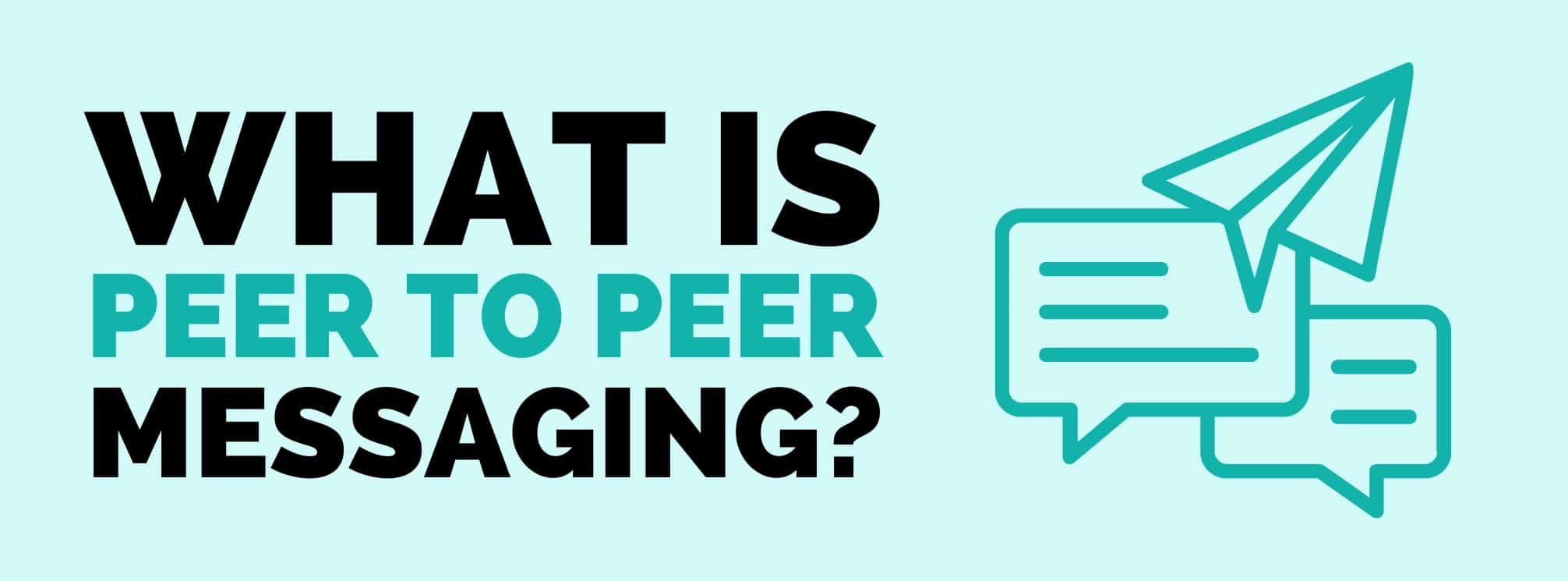
Over the years, peer to peer chat solutions like Slack and Microsoft Teams have risen up as popular internal communication channels. But did you know that giving P2P chat to your frontline workers isn’t the right solution for their employee communication needs?
While I am 100% in support of increasing transparency, connection, and collaboration, I also believe that we need to pick the right channels for our business. And as it stands today, peer to peer chat has more risks than benefits and doesn’t make sense for a frontline audience.
Let’s dive into why that is.

First things first, what do I mean by peer to peer chat?
P2P chat is when individuals (or even a group of people) can instantly message one another through a communication platform.
This is also sometimes called direct messaging (DM) because you can directly send a message to a targeted user or group.
But wait! Isn’t targeting communication a good thing? Well, yes…but is that the right technology for all your teams? It makes a ton of sense for office workers who need to quickly collaborate on a computer-based task. But is that what your deskless workers need? More on that later.
The rising trend of providing peer to peer messaging solutions within employee apps is troubling.
Peer to peer chat is perceived as something you need to provide your workers with because companies strive to provide more transparency and collaboration. They think that p2p chat will improve employee engagement. And while it might for some, it’s not a one-size-fits-all solution.
There is certainly a business case for computer-based workers having chat solutions so they can better collaborate. But beyond that, we don’t see a great use for it for the frontline. But more on that in a second.
The problem is, if you don’t have the right employee communication solutions available for all your employee groups, they will find them elsewhere.
Shadow IT is when technology, applications, and software begin to be used by employees without IT approval. This is a big problem because IT is responsible for ensuring the company is using tech that’s secure, accessible, integrates with the rest of the tech stack, and fully vetted for security vulnerabilities.
When we fail to provide the technology that employees need to do their jobs, they often resort to finding the technology without help or approval. Not to scare you, but you might not even be aware how often this is happening at your company.
If you only provide your frontline teams with peer to peer chat for employee communication, they might resort to other tools that really solve their problems. Most frontline teams don’t need a chat solution on the plant floor or in the hospital. They are working alongside one another and can just speak to each other.
What they might really need is a resource hub with links to all the other systems and tools they need. Or a digital newsletter optimized for mobile consumption.
Another thing you should be really careful about with p2p is who you choose to work with.
At JPMorgan, they recently paid $200 million in fines for allowing their employees to use WhatsApp for direct messaging. In their case, they were actually purposefully trying to evade regulations in an industry where it’s mandated that they have very well-documented records of employee-client conversations.
But it’s a really good reminder that certain third-party applications aren’t secure or aren’t made for business. We also know that WhatsApp, in particular, is often what employees turn to if they don’t have internal communication channels. But this really is not a great channel for employee comms, and it can potentially pose legal and security risks for your company.
Properly vetting your technology partners is critical. It’s in the best interest of IT, HR, operations, and internal comms to get on the same page about who they work with to solve employee communications challenges.
Once your company decides that you need to invest in a vetted internal comms solution, we urge you to reconsider including peer-to-peer chat as a must-have. We don’t think it’s worth the extra money, and it doesn’t solve the real communication challenges that the deskless workforce faces.
So, what’s so wrong with peer-to-peer messaging for frontline workers?
To choose the right employee comms tool for your deskless workforce, you should start by examining what these employees have access to. We recommend doing an internal comms audit at least once a year since your tools and systems are constantly changing. This will help you see what messages and channels frontline workers have access to today compared to what they should be receiving.
[optin-monster slug=”qqlossmfuvzbbezva8yg” followrules=”true”]
Our clients have all gone the mobile employee app route for employee communication because:
Ultimately, peer to peer chat is less of a priority than other methods of communication for deskless workers. These employees might be relying solely on face-to-face communication from their direct manager. They might only receive direct mail and bulletin board announcements about important topics like employee benefits.
Without a good reason or strategy for enabling P2P messaging for the frontline, it is more likely to cause challenges. You should prioritize your top-down, bottom-up, and middle-out communications instead.
Bring communication out in the open. Target messages to the right groups. Cut down on the noise.
If you’re interested in learning more about theEMPLOYEEapp as an internal communications solution for your deskless workforce, schedule a demo today.
[optin-monster slug=”gqorn0natkqgyrtjvr6i” followrules=”true”]